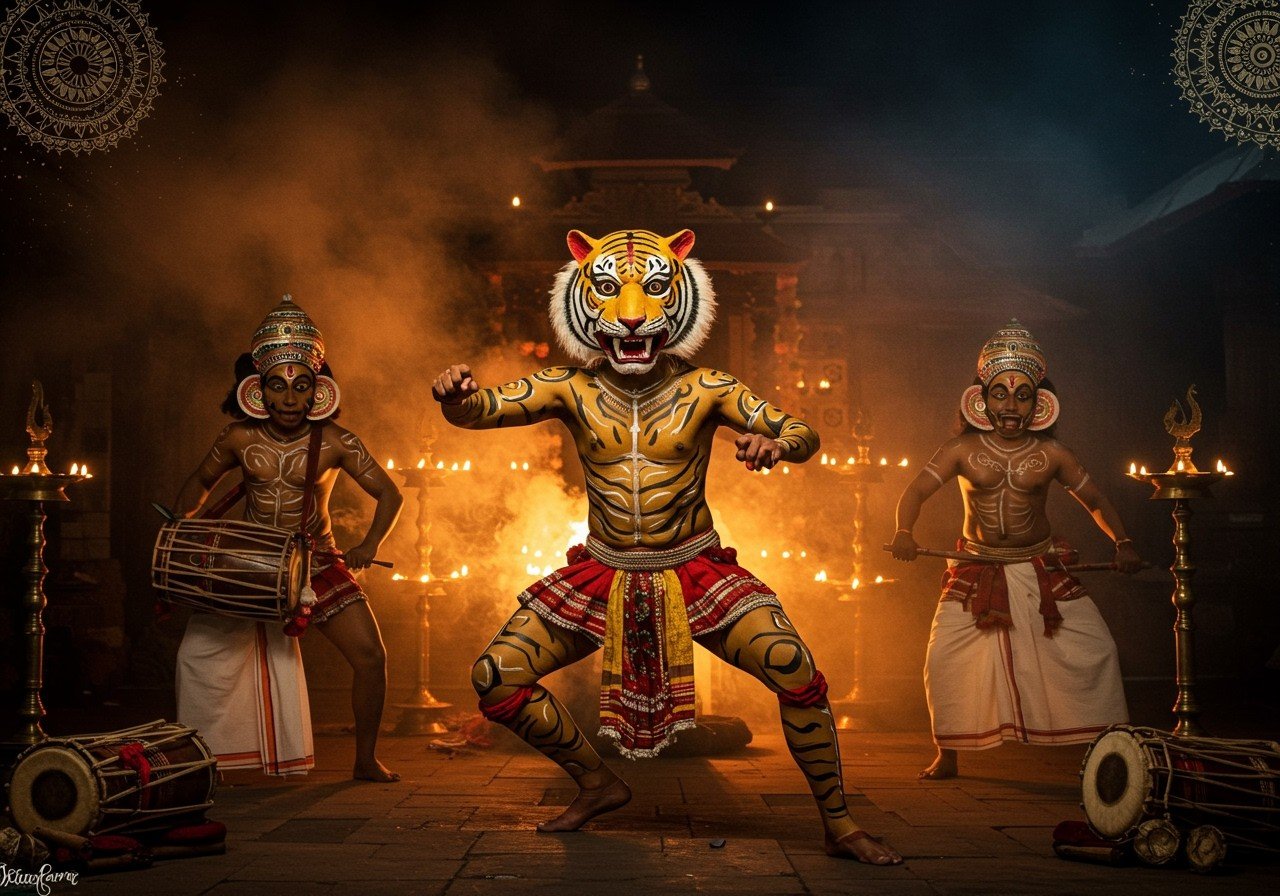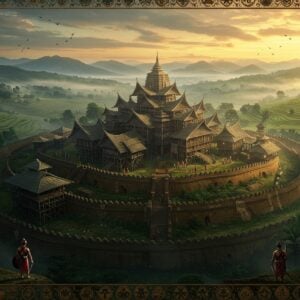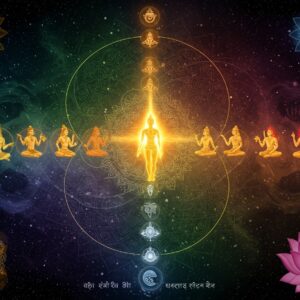
Puli Kali, the “Tiger Play,” is more than just a folk art; it’s a vibrant expression of Kerala’s rich cultural heritage. This mesmerizing spectacle, celebrated during Onam, transforms artists into majestic tigers, captivating audiences with their energy and artistry. Let’s explore the significance of Puli Kali and its evolution over time.
A Journey Through Time: The History of Puli Kali
With roots stretching back over two centuries, Puli Kali originated as a royal entertainment during Onam, introduced by Maharaja Rama Varma Sakthan Thampuran, the then Maharaja of Cochin. This tradition has gracefully evolved, blending traditional elements with contemporary influences, showcasing its enduring appeal.
The Art of Transformation: Puli Kali Costumes and Masks
Envision the electrifying transformation as artists embody the spirit of the tiger. Their vibrant costumes, meticulously crafted with bright hues of orange, yellow, and black, mimic the tiger’s magnificent fur. From synthetic paints to natural dyes, every stripe and spot tells a story, bringing the tiger’s essence to life.
-
Costumes: These aren’t mere outfits; they’re works of art. The intricate designs, carefully painted onto the performers’ bodies, evoke the power and grace of the tiger, captivating onlookers and embodying the spirit of the festival.
-
Masks: Skilled artisans use traditional techniques and materials like papier-mâché and lightweight wood to create these striking masks. Each mask is a masterpiece, meticulously painted to depict the tiger’s fierce features, enhancing the performance and leaving a lasting impression.
The Artistry of Puli Kali: Drawing Techniques
The transformation into a tiger involves more than just costumes and masks. Talented local artists use their skills to paint intricate tiger patterns onto the performers’ bodies. This meticulous process is a testament to Kerala’s rich artistic heritage, turning each performer into a living canvas that celebrates cultural expression.
Puli Kali in the Modern Age: Adaptations and Challenges
Puli Kali has adapted to modern times while retaining its core essence. Changes in costume materials and performance styles reflect the festival’s ability to evolve while honoring its roots. However, challenges such as commercialization and environmental concerns regarding synthetic paints require attention. Efforts are underway to balance tradition with sustainable practices.
Experience the Thrill of Puli Kali 2025
Mark your calendars! Puli Kali 2025 is set to take place on September 8th in Thrissur, the heart of the festivities. Plan your visit to witness the electrifying performances and immerse yourself in the vibrant atmosphere.
Want to be part of the celebration? Explore online options for authentic Puli Kali attire and masks, blending tradition with the ease of online shopping. Poojn.in offers a range of traditional items to enhance your Puli Kali experience.
Poojn.in: Your Partner in Preserving Tradition
At Poojn.in, we understand the importance of honoring traditions. That’s why we offer a curated selection of products to support your Puli Kali preparations. Our durable bamboo products, including the South Dinajpur Special Bamboo Kulo (bamboo basket), are perfect for storing your Puli Kali costume materials and accessories.
We offer a range of convenient solutions for performers and organizers:
-
Bamboo Tokri (baskets): Ideal for safekeeping costume elements. Explore our collection here.
-
Bamboo Keeper Trays: Perfect for organizing face paints and ensuring easy access during preparations. Find our selection here.
-
Traditional Bamboo Soop: An essential item for ritualistic preparations, adding authenticity to your Puli Kali experience. Discover our range here.
For bulk orders or inquiries, contact us at 03369029784 or WhatsApp us at 9476142738. We offer pan-India delivery, ensuring that authentic ritual items are readily available for this cherished art form. Visit www.poojn.in to explore our full range of traditional products and experience the convenience of secure online shopping with doorstep delivery.
Learn about the Kodungallur Kurumba Bhagavathy Temple and its significance.
Explore the Kodungallur Bhagavathy Temple Bharani Festival.
Discover the Thirumandhamkunnu Temple Festivals.
Embark on a spiritual journey to the Thirnelli Temple.
Puli Kali 2025: A Fusion of Tradition and Innovation
As we anticipate Puli Kali 2025, we celebrate the harmonious blend of tradition and innovation. The artistry of costumes, masks, and drawings remains deeply rooted in Kerala’s cultural heritage, while modern adaptations ensure the festival’s continued vibrancy. Whether you’re a local or a visitor, Puli Kali offers a unique opportunity to connect with the community and experience something truly special.
FAQs about Puli Kali
What is Puli Kali? Puli Kali, meaning “Tiger Play,” is a vibrant folk art form from Kerala, celebrated during Onam. Performers paint themselves as tigers, dancing rhythmically to traditional music, creating a captivating spectacle. It’s a unique blend of artistry, athleticism, and cultural expression.
How is the Puli Kali dress made? The Puli Kali “dress” isn’t a garment but rather intricate body painting. Artists use vibrant paints, often fabric paint, to create realistic tiger stripes and patterns on the performers. This meticulous process transforms them into living, breathing representations of tigers.
What materials are used for Puli Kali masks? Puli Kali masks are typically crafted from lightweight materials like papier-mâché or clay. These materials allow for intricate detailing and comfortable wear during the energetic performances. The masks are then painted with bright, eye-catching colors to complete the tiger transformation.
Where can I buy Puli Kali costumes and masks? While readily available in local Kerala markets during Onam, you can also find Puli Kali costumes and masks online through specialized stores selling traditional Indian art and cultural items. This allows you to participate in the spirit of Puli Kali even if you can’t make it to Kerala during the festival.
How do I create a Puli Kali drawing? Begin by outlining a tiger’s form, focusing on dynamic poses. Use bright, bold colors and patterns reminiscent of the traditional Puli Kali style. Add details like expressive facial features and distinct stripes to bring your drawing to life, capturing the energy and vibrancy of the festival.
Why is Puli Kali important in Kerala culture? Puli Kali is more than just a performance; it’s a symbol of Kerala’s cultural richness and the vibrant spirit of Onam. It showcases the region’s artistic talent and brings communities together in joyous celebration, reinforcing social bonds and passing down traditions through generations.
Can anyone participate in Puli Kali performances? Absolutely! While traditionally performed by men, Puli Kali welcomes anyone passionate about the art form. It requires dedication, a willingness to learn the traditional dance and painting techniques, and a spirit of enthusiasm to embody the tiger’s energy.
Are there any workshops for learning Puli Kali art? Yes, workshops are conducted in Kerala, particularly around Onam, offering opportunities to learn the intricacies of Puli Kali. These workshops cover everything from costume making and mask crafting to the rhythmic dance routines, providing a comprehensive immersion into this captivating art form.


